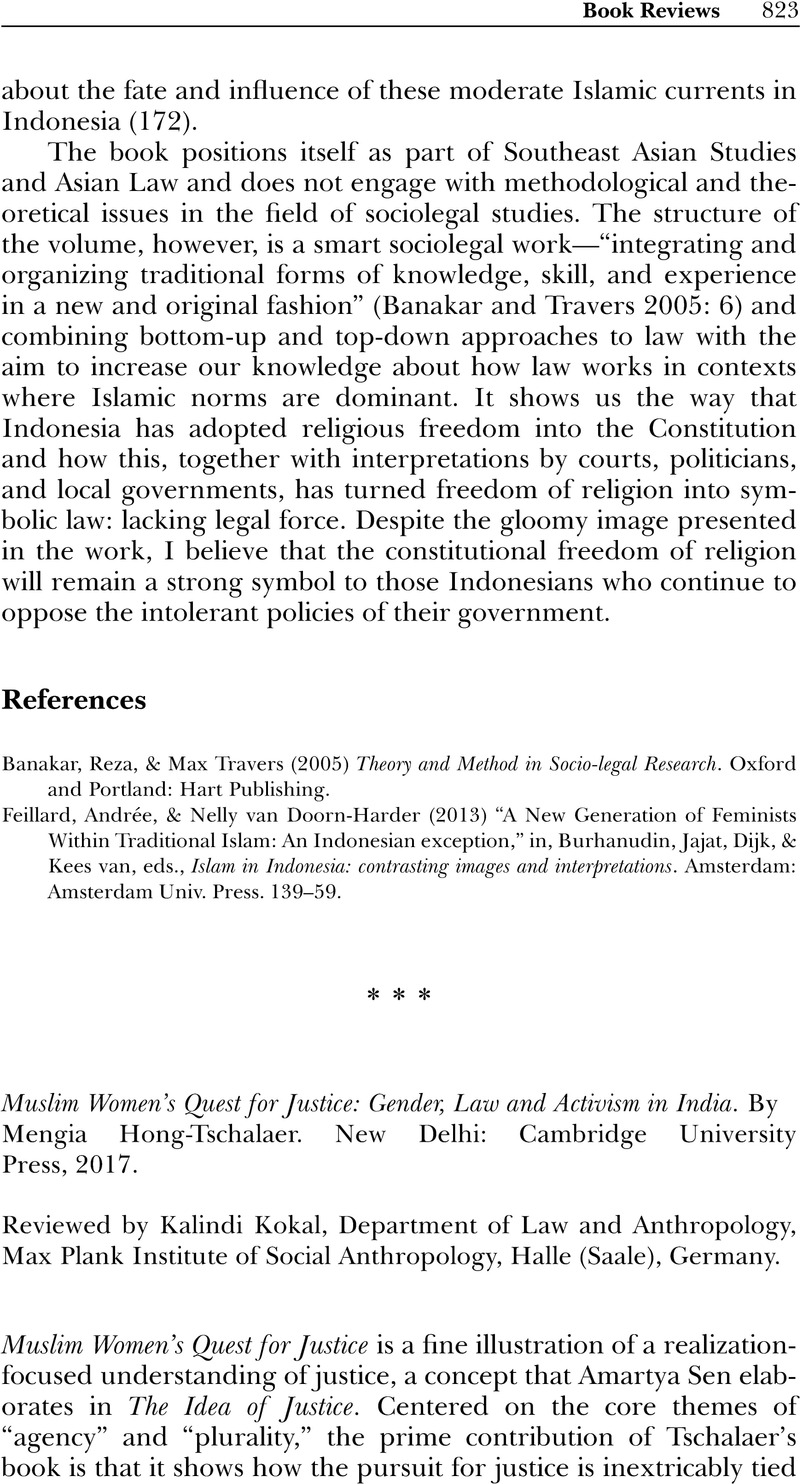Kokal, Kalindi (
2018) “
Tamāshā: The Theatrics of Disputing and Non-State Dispute Processing,” in
Normative Pluralism and Human Rights: Social Normativities in Conflict, edited by Kyriaki Topidi, 189–206. Abingdon, Oxon [u.a.]: Routledge.
CrossRefGoogle Scholar 